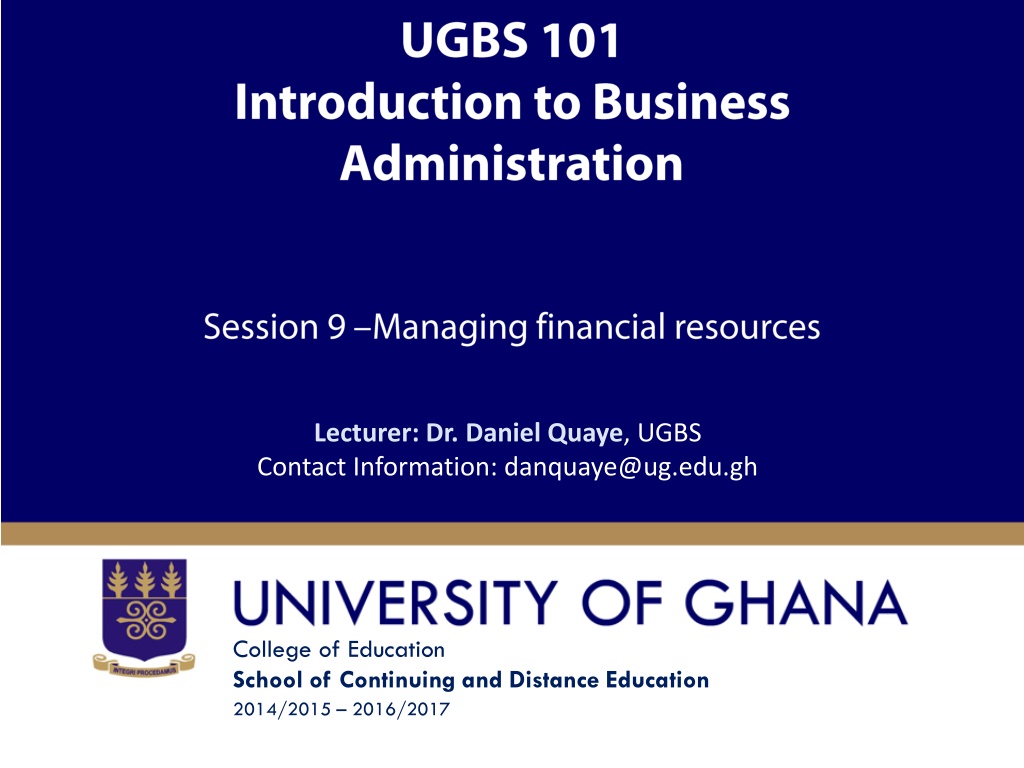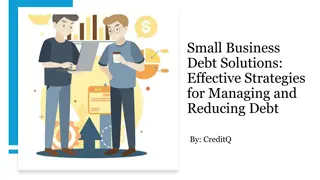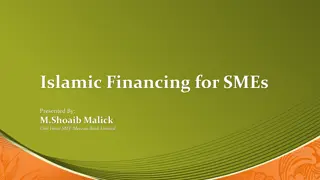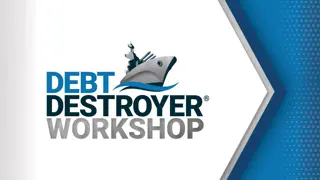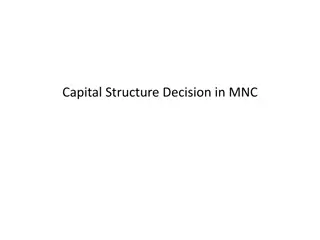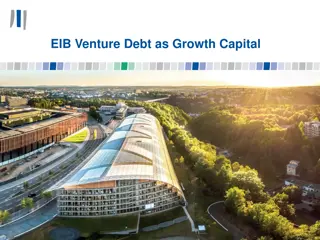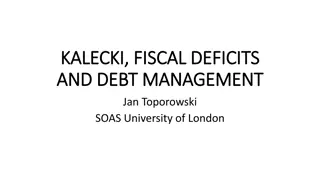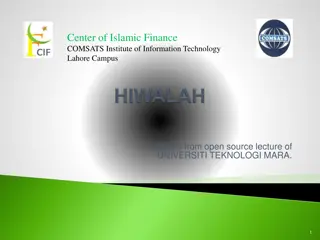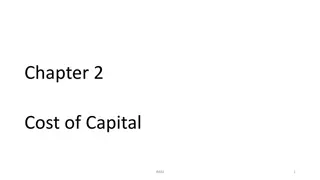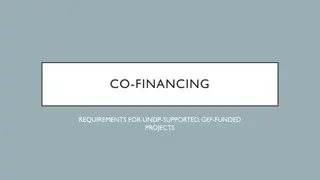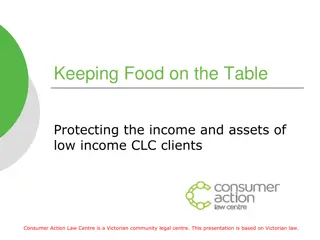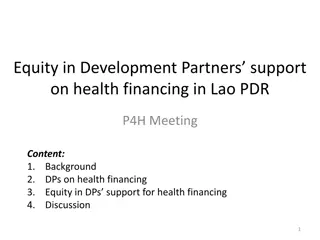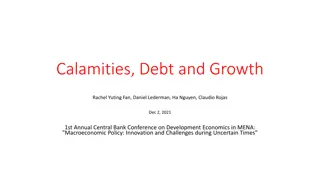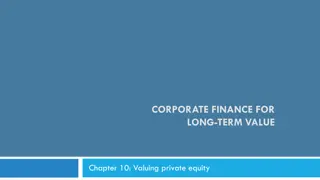Finance Fundamentals: Equity vs Debt Financing
Delve into the world of finance with Dr. Daniel Quaye from UGBS as he discusses working capital, types of finance, differences between equity and debt financing, and researching potential funders. Understand the advantages and disadvantages of each financing option to make informed decisions for your business. Gain insights into optimizing your capital structure and securing funding effectively.
Download Presentation

Please find below an Image/Link to download the presentation.
The content on the website is provided AS IS for your information and personal use only. It may not be sold, licensed, or shared on other websites without obtaining consent from the author.If you encounter any issues during the download, it is possible that the publisher has removed the file from their server.
You are allowed to download the files provided on this website for personal or commercial use, subject to the condition that they are used lawfully. All files are the property of their respective owners.
The content on the website is provided AS IS for your information and personal use only. It may not be sold, licensed, or shared on other websites without obtaining consent from the author.
E N D
Presentation Transcript
Lecturer: Dr. Daniel Quaye, UGBS Contact Information: danquaye@ug.edu.gh College of Education School of Continuing and Distance Education 2014/2015 2016/2017
1. Working capital Revenue- is used to pay the costs incurred in making money at present. Capital - money invested to ensure the business operates into the future. Slide 2 Dr. Daniel Quaye, UGBS
Cont. Characteristics Capital- calculated from figures in the balance sheet. Working Capital- Current assets minus Current liabilities. Slide 3 Dr. Daniel Quaye, UGBS
2. Various Types Of Finance Equity - Capital invested in the business by owner/s Debt finance - a loan to the business. Slide 4 Dr. Daniel Quaye, UGBS
3. Differences between equity and debt financing Equity financing (Advantages) Equity finance acquired externally is an investment of capital in the business. It does not usually need to be paid. Slide 5 Dr. Daniel Quaye, UGBS
Equity finance (Disadvantages) Share of profits must be distributed to investors. When acquired externally, level of control might be reduced due to other stakeholders. When provided by the owner, it limits availability of funds for other uses. Slide 6 Dr. Daniel Quaye, UGBS
Debt financing (Disadvantages) Must be paid within a specified time. If payments are not made on time you may lose your business. Dr. Daniel Quaye, UGBS
Debt financing (Advantages) Have use of additional sources. Retain full control of your business. Slide 8 Dr. Daniel Quaye, UGBS
4. Researching your potential funders a. Do they fund businesses in my industry? b. At what stage of business development do they provide funding? c. What are the minimum and maximum amounts of funding they consider? Slide 9 Dr. Daniel Quaye, UGBS
Cont. Researching d. What are the minimum and maximum sizes of the business they consider funding? e. On what basis do they generally consider funding: equity or debt? f. What other companies in my industry have they funded previously? Slide 10 Dr. Daniel Quaye, UGBS
Cont. Researching g. What kinds of information would they require me to submit with my plan? h. What is the funder s reputation in the industry? Slide 11 Dr. Daniel Quaye, UGBS
5. Sources of finance Issues to be considered before attempting to gain external finance; Slide 12 Dr. Daniel Quaye, UGBS
a. Existing enterprises Funds can often be made available from within existing businesses. These funds might be sufficient to meet all immediate needs. Even if they are inadequate, they would reduce the amount to be found externally thus increasing the probability of obtaining them. Sources of such funds include; Slide 13 Dr. Daniel Quaye, UGBS
Fixed Assets Fixed assets such as vehicles, equipment, fittings and property could be reviewed. They are often a source of cash in that it might be possible to sell off little used assets and hire suitable replacements as required. Slide 14 Dr. Daniel Quaye, UGBS
Suppliers Extended payments terms for your purchases or materials give you the opportunity to obtain funds from the sale of your products and to use these funds to pay your suppliers. Slide 15 Dr. Daniel Quaye, UGBS
b. Existing and start-ups The entrepreneur must carefully consider borrowing additional finance particularly if the business is starting up for the first time. Different institutions will offer different interest rates, terms of payment and require different levels of security. Such resources include; Slide 16 Dr. Daniel Quaye, UGBS
Merchant Banks These banks are active in providing large loans to medium to large scale businesses for two to five year periods and are therefore seldom suitable lenders to small businesses. However, if a small business has a viable project that requires large scale financing these banks would be worth approaching. Slide 17 Dr. Daniel Quaye, UGBS
Mainstream Commercial Banks Although these banks can be approached for finance, it is often the case that the minimum loan they offer is in excess of what is required by most small enterprises. Furthermore, they charge high interest rates which most small businesses would struggle to pay. Slide 18 Dr. Daniel Quaye, UGBS
Rural banks Most rural offer some form of credit assistance to small enterprises through microlending. Microlending as practiced by rural banks is a new branch of poverty-focused development in practice . Consequently, unlike the mainstream banking institutions, rural banks have developed non- traditional banking methods that appeal to small enterprises. Slide 19 Dr. Daniel Quaye, UGBS
Micro, Small & Medium Enterprises Project This institution provides financial assistance and technical support to small-scale enterprises. Slide 20 Dr. Daniel Quaye, UGBS
Venture Capital Fund This institution oversees four venture capital operators that assists the development of small-scale enterprises Slide 21 Dr. Daniel Quaye, UGBS
Leasing companies Provide access to assets without the need for a large capital outlay. Slide 22 Dr. Daniel Quaye, UGBS
Export Development Investment Fund Offers credit assistance to exporters Slide 23 Dr. Daniel Quaye, UGBS
Reading list Introduction of Business Administration Distance Education Manual- Dr Daniel Quaye. Madura, Jeff (2007), Introduction to Business Administration, South-Western College Slide 24 Dr. Richard Boateng, UGBS
